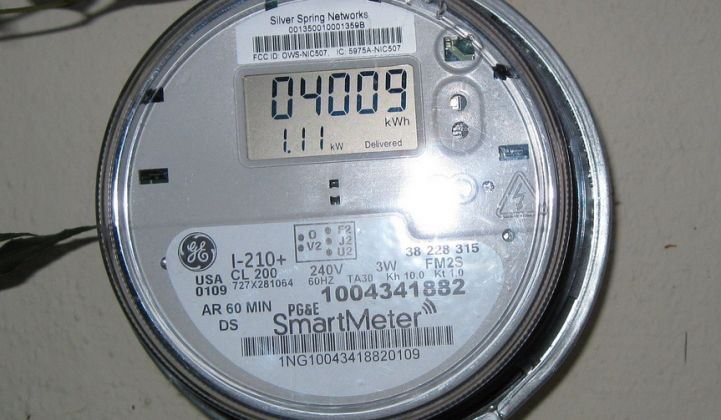The California Public Utility Commission ruled today that Pacific Gas & Electric customers that do not want smart meters could pay to have an analog meter.
The long-awaited vote is being watched by other states, although California is not the first to formalize its smart meter opt-out plans.
Residents who are concerned about their smart meters, whether due to privacy issues or electromagnetic radiation health concerns, they can pay a premium to get an analog meter instead of the smart meter.
The added cost of not sending the information wirelessly means about $113.4 million in added costs to PG&E’s customers over the next two years. The $113.4 million was based on the cheapest option -- turning the radio off. The other options include ripping the radio completely out of the meter or replacing the smart meters with the old analog meters. Another option is hard-wiring the connections, although that is even more expensive than putting an analog meter back in.
PG&E was pushing for the ‘radio-off’ option, but the opposition argued that even without the radio, the meter still emitted radiation. PG&E did provide the information that the meters do in fact still emit some RF when the radio is turned off or removed completely, but the CPUC found it was still below the FCC allowable emissions.
For the pleasure of living in a smart-meter-free environment, customers will have to pay $75 upfront and $10 monthly for an analog meter. Low-income customers will pay $10 upfront and $5 per month. A radio off-meter did not meet the concerns of opponents, and a hard-wired meter was seen as too expensive. The difference in cost between putting analog meters back in versus turning the radio off was $416 versus $402, respectively.
The upfront costs are less than what PG&E initially asked to charge customers, but they are also higher than what Central Maine Power is charging its customers. In Maine, customers are charged $20 for a meter with a disabled radio, and $10.50 per month thereafter.
“Today’s decision provides a choice to customers who would like to opt-out of PG&E’s smart meter installation program at a much lower cost than originally proposed," Commissioner Timothy Alan Simon said in a statement. “It is a great example of how public initiative and participation can result in better regulatory policy.”
Maine, which has had its opt-out program in effect since last summer, expects to see about 6,000 customers choose the option once everyone's request has been processed. But already, many people are opting out of opting out, so to speak, because the extra $10 to $12 a month is a higher price than they’re willing to pay.
In California, the stakes are far higher. PG&E’s cost calculations assumed that 148,500 customers would turn off the radios in the meters or move back to analog. However, CMP initially estimated about 9,000 people would opt out, and the figures are actually far lower.
If PG&E’s figures are correct, however, it could impede California’s aggressive smart grid plans for the big three investor-owned utilities. The utilities, including PG&E, are expected to move to more residential time-of-use pricing and demand response programs, which are nearly impossible to deliver seamlessly and automatically without fully enabled smart meters.
“We remind parties that while we believe that residential customers should be offered an opportunity to opt out of receiving a wireless smart meter, the selected option should not impede state energy objectives,” the CPUC wrote in the decision. “As such, it is important that the selected opt-out option has the capability to allow customers to take advantage of smart grid benefits in the future.”
Many smart grid experts argue that those who opt out will just have to miss out on the benefits of detailed energy consumption and programs that could lower their bills in the future. Eventually, the CPUC had to agree -- for the time being -- and said it would go with only an analog opt-out option and revisit it once TOU pricing was being offered to all residential customers.
Unlike Maine, which has two opt-out options, the CPUC thought one option was less confusing for customers and less expensive for PG&E.
Perhaps even more importantly for PG&E, the CPUC did not make a determination in regards to a community-wide opt-out. The Commission will take the issue up in a second phase of the opt-out plan.



